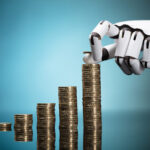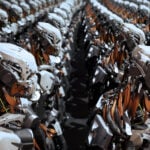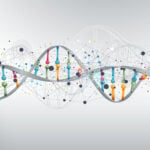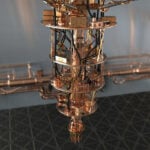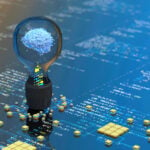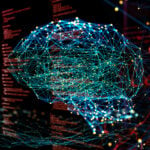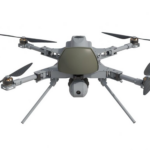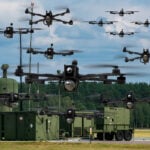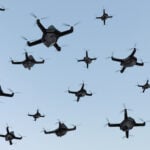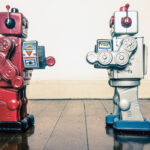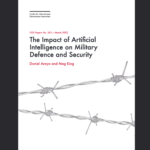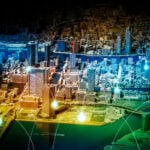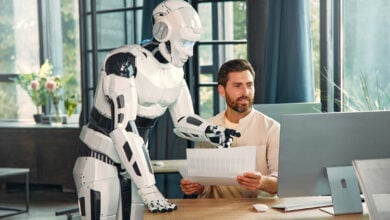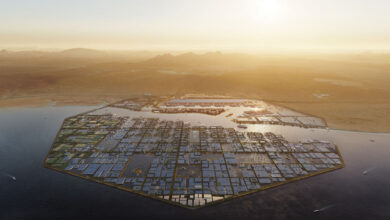Technology Trends for 2019 – More Amazing Than Flying Cars

Table of Contents
Technologies that could change the world have been a popular topic for the past half century. True, the predictions that everyone would drive flying cars have not materialized, but what has materialized would astound those who offered such predictions 50 years ago. And where emerging technologies are headed is even more stunning.
Seven technologies, in my opinion, are poised for explosive growth in 2019. And what they can accomplish this year and beyond is not even the most significant disruption that I see them causing. But I’ll get to that later. First, let’s look at the Significant Seven.
Internet of Things (IoT)
The IoT literally surrounds us. The number of physical devices that are part of the IoT surpassed three times earth’s population in 2018 and is expected to exceed 10 times earth’s population by 2025.
This connection between physical objects and digital systems serves two purposes. It can create “smart” products that extend both the products’ functionalities and their users’ ability to connect with them. This gives consumers more control of the world around them and a more satisfying user experience.
Or it can feed data from physical objects into a digital system that can analyze and use that information to improve the outcomes of manufacturing or other processes. Outcome-based IoT enables cities to provide more efficient transportation to residents, power companies to anticipate equipment failures and fix them before users are inconvenienced, manufacturers to improve their processes, car manufacturers to improve vehicle safety, health providers to monitor high-risk patients remotely and much more.
IoT is even being used in dirt. Sensors embedded in agricultural operations monitor soil conditions. That data is analyzed by digital systems that control irrigation and fertilization to ensure that each segment of the field receives optimum water and nutrition to achieve maximum yields.
Expect IoT to grow dramatically. With $1.7 trillion projected to be spent on IoT by 2020, it promises to be the fastest-growing technology transforming our lives.
Artificial Intelligence (AI)
AI, after decades of debate over whether it offered any applicability to business, is on the verge of hockey stick growth. Market research firm Tractica predicted that AI annual revenues would explode from $644 million in 2016 to $5 billion in 2020 to $36 billion in 2025.
AI already operates in many areas of our digital lives without us realizing it. It operates in smartphones and other computing devices, driving voice assistance functions, like Alexa, Siri and Cortana. It operates in our email platforms and social media, observing what gets our attention, so it can sort incoming messages accordingly.
Our digital lives and physical lives are rapidly converging. As they do, AI will touch nearly every aspect of our lives, from the cities we live in (smart cities), the homes we live in (smart houses), the cars we drive (smart cars), the items we use (manufactured in smart factories) to the food we eat (grown by agribusinesses that employ smart technology to monitor soil and climate to wring the highest possible yields out of each square meter of their fields).
Shanghai, China, currently is working to become the leading provider of smart technology to the world. It is building its own million-acre “Intelligence Valley” and other smaller AI-focused industrial centers, which it expects to be the next step in the evolution of industry, displacing Silicon Valley as the center of cutting-edge technologies.
With AI poised to affect our lives in nearly everything we touch, we need to prepare for the massive changes it will bring not only to our physical environment, but also to our work world. And with the speed at which AI is transforming our work world, it is high time that we consider how to prepare for the disruptions AI will bring.
Blockchain
Blockchain is chiefly known as the technology that underlies cryptocurrencies. It provides a digital distributed ledger that securely validates and records all transactions submitted to it without running transactions through a centralized, trusted third party to validate their accuracy and integrity. The system uses cryptology, redundancy and algorithms rather than human oversight to provide almost instantaneous transaction validation.
Uses for this technology go far beyond cryptocurrencies, though. Early adopters among financial institutions are paving the way for a faster and less expensive way of processing financial transactions than traditional systems do.
Blockchain also enhances the processes related to drafting and executing contracts, through smart contracts. Rather than needing human intervention to validate that conditions have been met at every step in contract fulfillment, a smart contract monitors all conditions online and automatically triggers whatever action required whenever a condition is met.
Blockchain opens new use cases in the healthcare industry, too. It provides a secure way in which multiple providers can access patient information without jeopardizing patient privacy. And it opens use cases for the sharing economy, allowing peer-to-peer payments for high-value assets that this economy requires.
Researchers are currently exploring blockchain for creating a more robust domain name system that would better protect websites against DDoS attacks, a simpler and more transparent and secure election process and much more.
3D Printing
3D printing can do more than produce prototypes or novelty items. It offers a promising future for creating both highly customized or highly standardized items. In the realm of customized items, 3D printing already produces 98% of the hearing aids used worldwide, because of its ability to provide a perfect fit for each person’s ear canal. As for standardized items, Airbus increasingly uses 3D printing for finished parts in its aircraft.
3D printing makes going from design to finished product one, continuous step, free from costly steps such as prototyping or tooling. This cost reduction increases opportunity for innovation and experimentation.
It also offers the ability to create far more complex designs. GE used this functionality to redesign its LEAP jet engine nozzle as a single component instead of 18, eliminating the need to assemble all those components and greatly reducing its weight.
3D printing also allows a production-on-demand model that eliminates costly overproduction and storage costs. 3D printing facilities will not face the kind of limitations that today’s manufacturers face; instead, they will be able to print any final products for which their customer provides the design. Thus, a new, Manufacturing as a Service model is likely to develop to serve customers who don’t want to invest in their own 3D printers.
Of course, eventual commoditization of the technology will eventually lead to 3D printers printing needed parts on-site. Many manufacturers will eventually sell designs more than finished products.
Robots
Robots have been around for half a century, but their uses today are rapidly changing. Once largely isolated from human workspaces, they are increasingly being used in dynamic environments and alongside humans.
Hospitals increasingly use them for routine needs – and are considering them for delicate operations, due to their ability to mimic human movements with greater precision than humanly possible and without getting fatigued. Agribusinesses find them capable of identifying and killing weeds, or picking delicate fruit. Improved sensor systems allow robots to work close to humans without the risk of inadvertently harming them.
The strides forward in machine learning also make collaboration between humans and robots attractive. Many of today’s robots are capable of learning tasks from humans that programmers couldn’t effectively program into less advanced robots.
Today’s robots are becoming more modular. Whereas previous generations largely were designed as proprietary systems capable of functioning only for specific purposes, manufacturers today develop platforms and modules that can be adapted to highly customized needs without users needing to build everything from scratch.
Advancements are bringing the price of robots down, too. Single-purpose robots once cost hundreds of thousands of dollars. Models that are far more advanced and flexible in functionality now cost only tens of thousands. All these factors make robots attractive not only on the manufacturing floor, but in a wide range of environments.
Drones
Mention the word “drones,” and most people picture either a hobbyist piloting a personal drone for entertainment or widely publicized tests on using drones to deliver packages to people’s doorsteps. Applications for drones go far beyond those two uses, though. A 2016 PwC study of the global business market for drones places their value to businesses at more than $127 billion.
Drones can do anything a helicopter can do. The fact that they are smaller, cheaper to build and don’t require professional pilots makes them a huge cost cutter for owners. Also, drones’ ability to fly over and monitor any terrain makes them especially valuable to enterprises that have physical assets spread out over large stretches of territory.
Uses are wide-ranging. Their ability to reach remote or dangerous locations suits them for mapping, monitoring and delivering supplies to locations that are difficult to reach by traditional methods. They can monitor critical infrastructure such as pipelines or power lines across sparsely populated spaces, even providing immediate response to threats, if needed. Researchers even envision adding maintenance capabilities to drones, to enable them to perform minor repairs to problems they detect.
Drones are already used for aerial photography, for surveying construction sites to inspect progress and head off potential problems, and to do the otherwise difficult job of inspecting windmills on energy farms for signs of stress. Drones also use sensors on large agricultural operations to monitor crop health, detect potential insect infestations and administer pesticide applications to locations that need them.
Those who write off drones merely as hobbyists’ toys or dreams that will never be fulfilled are in for a surprise. As use cases, technology advancements and regulatory acceptance of drones grow, they should become a common sight around us.
Augmented Reality (AR)
AR bridges the gap between the physical world and the digital one. It provides data – often in hands-free format –needed by personnel engaging in a physical process.
DHL warehouse workers wearing AR-enabled smart glasses that guided them through item picking showed a 25% increase in order fulfillment efficiency in a 2015 study. In another 2015 study, factory trainees at Boeing who used to AR to help them assemble a mock airplane wing worked 30% faster and made 90% fewer mistakes on the first try when they used AR-animated tablets than those who worked from static PDFs.
AR can eliminate costly trips by experts to repair sophisticated equipment in remote locations. By providing regular staff at those locations with context-sensitive equipment specifications and repair directions, non-specialists can make repairs despite their lack of intimate knowledge of the equipment.
Future AR capabilities are expected to push human interaction with computers far beyond traditional keyboard, mouse and touch-screen interfaces. AR devices are expected also to use location-sensing technology that updates what the user sees in real time as they move relative to the object, as well as sensing user hand movements and eye tracking.
As AR technology advances, steep growth is expected. A study from ReportsnReports predicted that revenues for this technology would rise from $660 million in 2015 to $2.6 billion in 2022. And this growth was predicted despite AR’s current fragmentation behind multiple platforms.
The most significant disruptor – technology convergences
While each of these technologies promise significant benefits on their own, the true potential for changing our world comes not from what they will do individually, but what they will do together. We will feel the biggest impact once we integrate these technologies into complex and innovative use cases.
Although I saw such projects starting in 2017, 2019 seems like the year when convergence will speed up. These technologies, once integrated, will be more disruptive than the PC and Internet ever were.
Internet of Payments (IoP)
One way in which technologies are merging is with IoP. IoP enables IoT-connected devices to autonomously place orders and authorize payments, facilitated by AI, blockchain and cryptocurrencies. Research suggests that this Machine-to-Machine (M2M) market will account for $27.62 billion in 2023.
Even now, apps like Amazon Dash and FitPay make it possible to save the time used to find and order favorite products by placing orders at the touch of a button. Yet projections are that even this minimal human interaction will eventually be unnecessary for purchases. Here are some use cases envisioned for IoP.
- A washing machine recognizes that one of its parts is close to the end of its useful life and authorizes the purchase and shipment of the failing part.
- A driver stops for gas, the car authenticates the driver’s identity and authorizes the gas purchase as the driver starts filling the tank – all without the driver pulling out a credit card.
- A health insurance company monitors policyholder fitness participation and authorizes a rebate or rate reduction based on the policyholder meeting predetermined goals.
- A consumer hears a voice message through the car’s connection with the consumer’s smartphone that the consumer’s bank has offered attractive terms for a loan on a big-ticket item the consumer was researching earlier. With a simple “yes,” voice recognition activates the loan, the order is placed and is scheduled for delivery – all without the driver taking hands off the wheel or eyes off the road.
None of these are likely to come into widespread use in 2019. Some of the more complex scenarios are a few years away. But the technologies necessary to accomplish such transactions are rapidly moving toward becoming as commonplace as using apps on our smartphones is today.
What full convergence of emerging technologies may be like
Convergence of these technologies likely will go beyond just the IoT, AI and blockchain involved in IoP. Here’s an example of how this convergence could change our lives.
Imagine a smart apartment building in which IoT vibration sensors are attached to core components of heating and air conditioning equipment. Those sensors send data for AI analytics processing. We are making great advances in predictive maintenance and in estimating Remaining Usefulness Lifetime (RUL). Predictions are becoming more precise and accurate.
By monitoring slight changes in vibrations of each part, AI analysis determines when a part needs to be replaced. Rather than replacing parts months – or years – before they need to be, or waiting until one fails and inconveniences tenants, AI analysis ensures that the property owner gets maximum use of each part, generally decreasing replacement costs by 20%.
When AI analysis determines that a part is near the end of its RUL, it can autonomously order a replacement part using IoP. Depending on the part, it might be printed on-site by an industrial 3D printer. All this would happen without human intervention (at least up to a predefined spending limit) and would be paid via cryptocurrencies. The AI system analyzing all the vibrations would send the request to the 3D printer directly.
If printing the replacement part on-site is not feasible, the system could send an order to an outside part supplier. This provider could manufacture and deliver the part by drone, self-driving truck or robot, like the small, local-delivery four-wheel autonomous delivery vehicle that Domino’s is testing in Australia.
In the whole example so far, human intervention would not be needed (unless the part’s cost exceeded the predetermined spending limit). That includes eliminating the need for equipment checks by maintenance engineers, orders, accounts receivable, accounts payable or delivery. The technologies would handle all those steps.
Once the part was printed or delivered, a maintenance engineer would be notified to install it. Even here, technology would change the replacement process. Rather than the building having multiple specialist engineers (electricity, plumbing, HVAC) on staff to maintain complex systems, the building could call an engineer with general rather than specialized skills to perform the replacement. Such an engineer would be able to perform tasks beyond their training, guided step-by-step by AR.
This removal of humans from such a scenario does not mean that people will have no jobs. They will have opportunity for higher-level-employment in jobs that these technologies have not yet created.
Before you conclude that the scenario I just presented is a pipe dream, I worked on a very similar project. It was not for a smart apartment building, but for an industrial facility. The description I shared has not yet reached the mainstream, but this scenario is already used in specialized environments. What I believe will push this scenario into the mainstream is the outcome of that project. The savings and efficiencies achieved were unprecedented.
Taking the scenario further
Now take that scenario and expand it beyond a single building. The same technologies could deploy across cities, transportation systems, power distribution grids, water and waste management systems and food providers. Smart cities and all the elements that go into where we live, how we get around, how we work, what we eat and how we live our lives rest on systems that these converging technologies offer great potential for greater efficiencies and improved sustainability.
All these technologies are ripe for rapid growth individually and exponential growth as they converge. The chief question for the speed of growth in 2019 is how quickly those who are in position to implement these technologies will recognize what they can do together.
How fast will transformation come?
Most of what we got in 2018 seemed willing only to nudge the status quo. We got a lot of half-baked technology and devices – many of which were eventually abandoned because they were geared more toward rolling out a new gizmo than providing value. We got “Smart City” projects that were too limited to truly effect change.
The place to watch for true disruptions is China. Their efforts to explore the full range of these technologies has surfaced in their “Intelligence Valley” efforts, as well as in several ambitious, ongoing efforts to build comprehensive “Smart Cities” from the ground up.
China, thus, will likely provide the most dramatic transformations from these technologies and their convergence in 2019. The rest of the world likely will merely pursue fragmented efforts for small gains and then play catch-up as China takes the lead.
How fast should transformation come?
Then again, there’s a downside to pushing these transformations too rapidly. Perhaps the examples I gave earlier of potential use cases for IoP gave you pause. “Having machinery order its own parts? Having my car authorize a fuel purchase? Having a simple ‘yes” obligate me to a big-ticket purchase?”
If you had any of those thoughts, you have good reason to do so. The same applies if you wondered about any of these technologies, “But how will this be protected from hackers?”
The technologies described, while offering wonderful benefits, also create potential vulnerabilities that must be addressed. They also raise privacy concerns.
The possibility also exists that cybercriminals will adapt emerging technologies to aid them in criminal endeavors. AI could conceivably be used to create more sophisticated phishing techniques. Drones could be used to drop grenades on crowded venues.
One of the longtime banes of emerging technologies has been their creators’ rush to monetize them as quickly as possible. Consumers are enticed by the new bells and whistles offered and rarely ask providers, “Is it adequately secured?” If we are to fully realize the benefits of these technologies – individually or converged – security needs to be at the forefront, not on the back burner.
What to expect
Expect these technologies to become increasingly integrated into everyday life in 2019 and beyond. Don’t expect to see them arrive with great fanfare, though. Most people will barely notice as they creep into daily life through new functionalities added to things they already use.
Their steady expansion into everyday life will add greater efficiencies and more benefits than we saw in 2018. They will not be as dramatic as cars buzzing through the air in all directions but they will be potentially even more useful.
For 30+ years, I've been committed to protecting people, businesses, and the environment from the physical harm caused by cyber-kinetic threats, blending cybersecurity strategies and resilience and safety measures. Lately, my worries have grown due to the rapid, complex advancements in Artificial Intelligence (AI). Having observed AI's progression for two decades and penned a book on its future, I see it as a unique and escalating threat, especially when applied to military systems, disinformation, or integrated into critical infrastructure like 5G networks or smart grids. More about me, and about Defence.AI.









